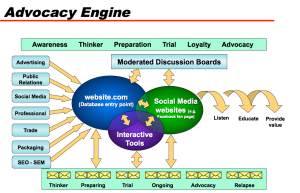Recently, I had the good fortune to facilitate a series of marketing war games for a large consumer package goods brand. The outcome of this marketing exercise exceeded all of our expectations. Participants gained a better understanding of the marketplace, their competitors, and the key strategies they needed to develop and execute. Entrepreneurs should consider investing the time and energy to conduct marketing war games to challenge and improve the way they are currently going to market.
When thinking about Marketing War Games, focus on the idea of marketing games. Think about spending a day, role playing, having fun, looking at your business in new ways, examining the competition from the inside, and looking at your business critically from the outside. This is a day of learning and re-evaluating the way your team looks at the world. Do not be turned off by the “War” in Marketing War Games. Focus on the idea of Marketing & Games and coming up with profit-building strategies.
One way to conduct marketing war games is to have two rounds. In the first round, your teams play the role of major competitive players and develop plans for the next year and then present their findings to all participants. In the second round, the teams become themselves and develop plans with the understanding of what the competition may be doing over the next year. Again, there is a group sharing.
Now, ins tead of marketing plans built on legacy inward looking thinking, you can build your plans with a more thorough understanding of the marketplace, the category, and competition.
How to conduct Marketing War Games
- Set aside a day.
- Recruit enough people for two teams and assign a Leader and a Scribe to each team.
- Make sure each team has a marketing person and someone from sales.
- Prepare and send out ahead of time as ‘homework’, briefing packets that include competitive product information, observations (SWOTs), press releases, and links to websites and online social media activities. If possible, actually have competitive product and promotional pieces available for when a team is pretending to be the competition.
- Remember, that you are playing a game. Embrace looking at the world from the perspective of your competition. Be playful
- While pretending to be the competition, be prepared to critically look at your own business.
- During the second round, the teams become themselves again and develop objectives, strategies and tactics built on the first rounds learning and insights.
- At the end of the day remember to thank everyone for their time, energy and critical thinking.
Remember during the Marketing War Games, sometimes the “Emperor really has no clothes”. In otherword, this is the time to recognize your weaknesses and exploit those weaknesses. During the session, the task at hand is to ask folks to articulate the following for the competition — Objectives, Strategies, and Tactics. Plus, ask the scribes to record the answers on their laptops. This will be very helpful when sharing with the entire group and later when results are analyzed and new plans are developed. Additionally, you may want to designate another scribe to capture the insights during the group discussion periods.
After the Games
Synthesize the results into clear insights and strategies. Consider capturing results under the headings of – Major Themes, Biggest Threats, Response to Competition, and Recommendations.
A surprising outcome, when play-acting as the competition, is that the participants come up with clear powerful articulated strategies. Many times these competitive strategies are better than their own business strategies when going into the games. Sometimes these initial strategies are muddled and built upon legacy viewpoints that no longer adhered to the competitive situation going into the future.
Reconsider current plans in light of your new insights and update your plans and marketing spending. Challenge yourself to focus on the three most critical activities you need to accomplish to make your product a success in the marketplace.
Remember, “Plans are nothing, Planning is everything”. Always, be prepared to thoughtfully adjust your plans to maximize your profitable sales. Marketing War Games provide a fresh actionable way for entrepreneurs to improve their planning and the way they go to market.
Tom McMillian is the president of Techtao, LLC
This blog was previously published within New Jersey Entrepreneur where Tom McMillian is recognized as the New Jersey’s Marketing Expert.












